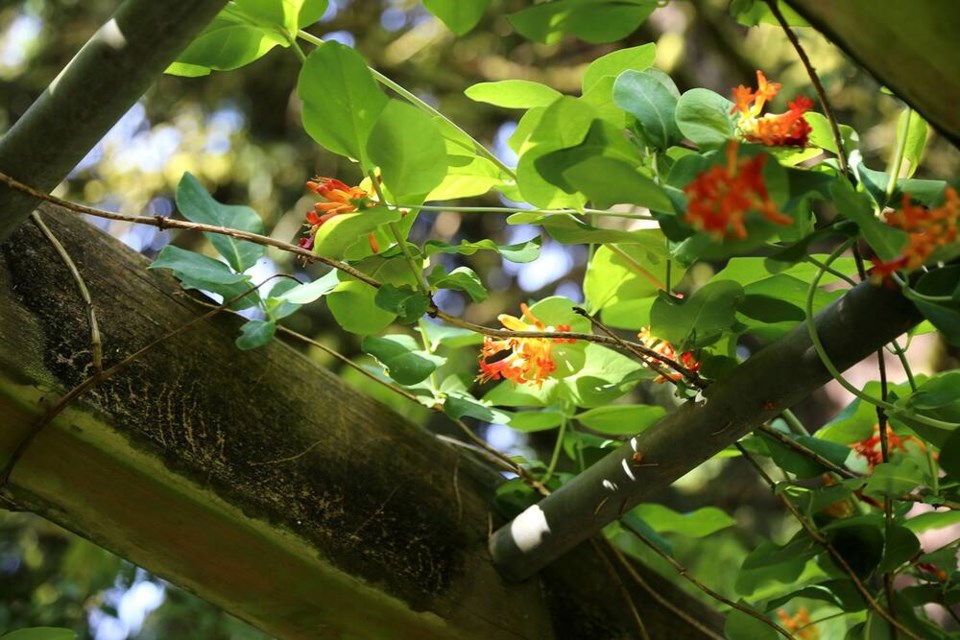Gardening, it is said, is intentional and therapeutic, meditative even. Happily, this is true. My personal experience with urban permaculture has yielded near-miraculous results healing both place and people.
Sadly, the tools of the trade can be difficult to find in the city. The very same race for shelf stability, convenience and exotic gratification that morphed neighbourhood green grocers into national grocery chains, relegated native gardening practices to the boring bin in favour of bagged sterile soil and non-native ornamental plants from the Asias and sub-tropics.
I admit to driving and ferrying long distances in search of native plants nurseries, to Grouponing wholesale at a loss for clients and friends – and also, shamefully, to borrowing a bucket-full of fungal-dominant native soil from a protected Vancouver Island forest to inoculate the Garry oak ecosystem on our front boulevard.
My native-plant-chasing carbon footprint arguably has been off-putting, but I was reminded yesterday, as we dug a massive drywell pit in our backyard to facilitate atmospheric river drainage, that the net gain of our urban permaculture efforts has been positive.
Not coincidentally, beneath the translucent sherbet orange blossoms of western trumpet honeysuckle (Lonicera ciliosa) trellised on the abandoned swingset/jungle gym in our back garden, the metre-deep slice into the earth exposed an impressive 33-centimetre-deep, jet black, horizon A layer of mineralized topsoil, chock full of biology and embedded carbon.
We dug down to the stony, unweathered bedrock characteristic of the nearby creek that was unwisely bulldozed over in the 1940s to make way for ranchers, and that more recently has reminded megahome builders that digging sump-pumped basements in our power outage-prone neighbourhood just isn’t a good idea.
There was evidence too of a burn long ago, as pockets of biochar appeared in the substratum. I imagine that the deep-rooted plants help transit the trace minerals and microorganisms living there up into the surface layers nurtured organically for a quarter century.
Circularity is everywhere in permaculture. One cannot see a thing without seeing everything in relation to it. Really, a perfect system of reciprocity, equitable governance and natural consequences. We have so much to learn, un-learn and re-learn.
As in all things related to consumer demand, native plants are as available as there is demand, so we should be enquiring and encouraging garden centres to carry a selection of native plants for sun, part sun and shade, as well as for dry, moist and wet conditions.
Ideally, we would be able to one-stop shop locally(ish) for a broad selection of native ground covers, perennials, shrubs, vines and trees, and also for living soil and regionally specific fertilizers and supplements.
Thankfully, there are a few small, native plant nurseries dipping their toes in, but we need so much more. Also, incentives and legislation at the community level would be game changing. Imagine heat-pump-level rebates and incentives for builders and landscapers to design native landscapes from the outset, and for homeowners to follow suit.
Holding carbon and water in our urban landscapes, growing native food, building habitat for native pollinators, birds and mammals should be the norm, not an outlier.
Lonicera ciliosa is a gorgeous, shade-loving deciduous honeysuckle native to the forests of western North America. Its bright orange blossoms light up the summer shade like snowberries in winter.
Both Rufus and Anna’s hummingbirds feed on the nectar, lingering for long spells in the coolness, drinking from deep within the sweet-scented, long-throated trumpets. Translucent pink berries are favourites of birds, deer, squirrels, rabbits and other mammals.
Laura Marie Neubert is a West Vancouver-based urban permaculture designer. Follow her on Instagram @upfrontandbeautiful, learn more about permaculture by visiting her Upfront & Beautiful website or email your questions to her here.
For a taste of permaculture, watch the video below:




